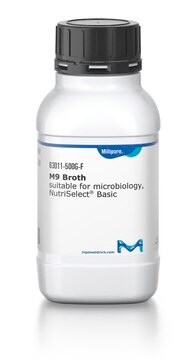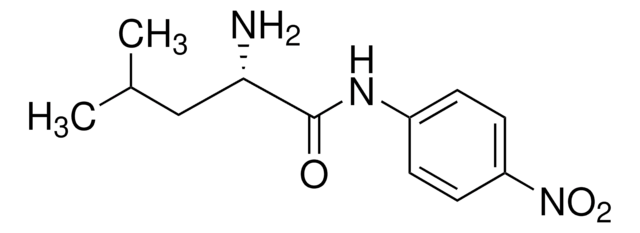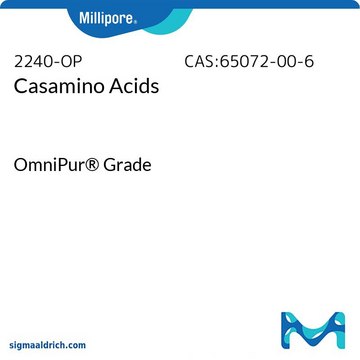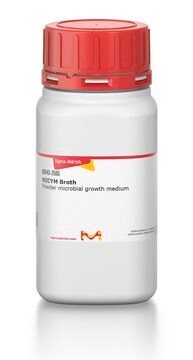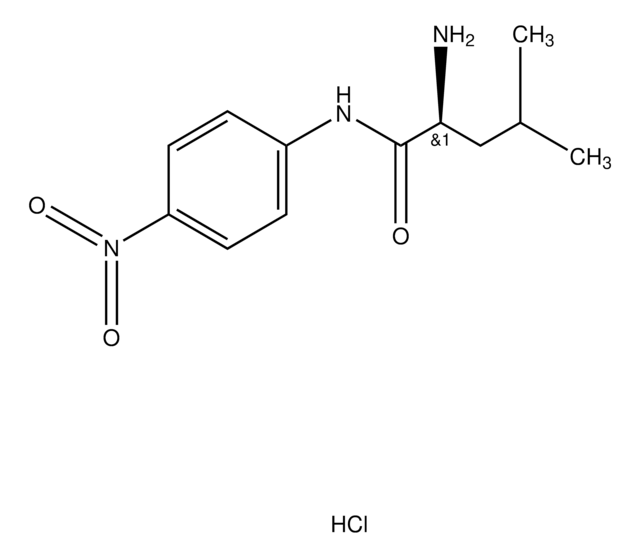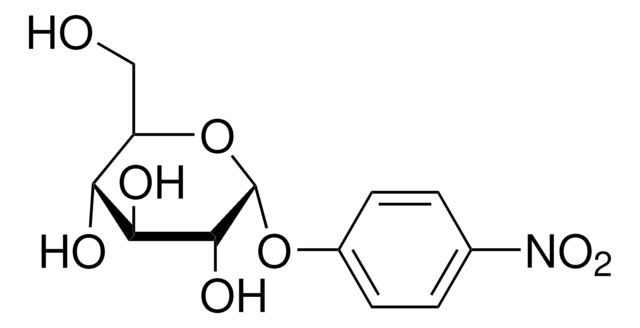M6030
M9, Minimal Salts, 5X
powder, minimal microbial growth medium
Sinónimos:
M9 media
About This Item
Productos recomendados
grade
for molecular biology
Quality Level
sterility
non-sterile
form
powder
composition
KH2PO4, 15 g/L
NaCl, 2.5 g/L
Na2HPO4, 33.9 g/L
NH4Cl, 5 g/L
application(s)
food and beverages
storage temp.
room temp
suitability
nonselective for Escherichia coli
nonselective for coliforms
General description
Application
- in a selective agar medium for the isolation of sulphate reducing bacteria
- in GMML minimal media to propagate phage-resistant DH10B cells
- in M9 minimal medium which is used for cell motility assay
Features and Benefits
- Standard formulation
- A budget-friendly alternative to liquid
Preparation Note
2. Autoclave for 15 minutes at 121°C.
This convenient 5× concentrate can be stored and diluted as needed to prepare 5 L of 1× M9 minimal salts.
For M9 minimal medium:
1. Aseptically dilute 200 ml of M9 minimal salts, 5× concentrate with 800 ml of sterile water. If necessary, cool to 45-50°C.
2. Aseptically add 20 ml of sterile 1 M glucose and 2 ml of sterile 1 M magnesium sulfate to prepare 1 L of M9 minimal medium.
3. If desired, aseptically add 0.1 ml of 1 M sterile calcium chloride to the M9 minimal medium. The M9 minimal medium may also be supplemented with the appropriate amino acids.
Reconstitution
Dilute the 5x M9 concentrated stock to a 1x working solution by adding 200mL 5x M9 stock to 800mL sterile water. If needed, allow to cool before making additions, such as antibiotics (if desired).
Related product
Storage Class
11 - Combustible Solids
wgk_germany
WGK 1
flash_point_f
Not applicable
flash_point_c
Not applicable
ppe
Eyeshields, Gloves, type N95 (US)
Certificados de análisis (COA)
Busque Certificados de análisis (COA) introduciendo el número de lote del producto. Los números de lote se encuentran en la etiqueta del producto después de las palabras «Lot» o «Batch»
¿Ya tiene este producto?
Encuentre la documentación para los productos que ha comprado recientemente en la Biblioteca de documentos.
Los clientes también vieron
Protocolos
General protocols for growth of competent cells in microbial medium.
Nuestro equipo de científicos tiene experiencia en todas las áreas de investigación: Ciencias de la vida, Ciencia de los materiales, Síntesis química, Cromatografía, Analítica y muchas otras.
Póngase en contacto con el Servicio técnico
